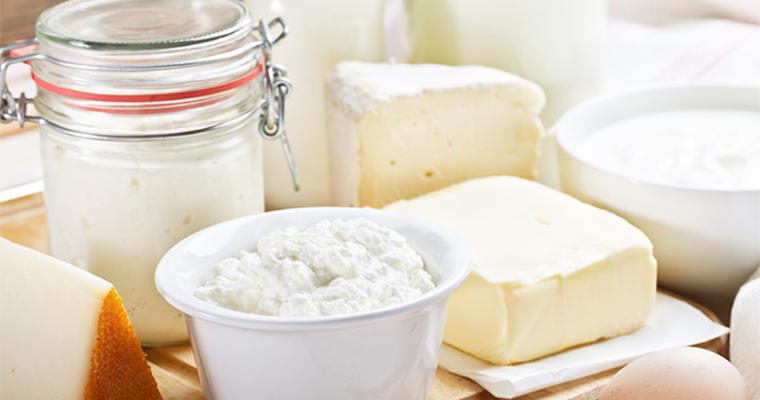People are consuming more dairy free products than ever before due to milk allergies, ethical concerns, or interest in a plant-based diet. These preferences are supporting the rise of non-dairy beverages or alternatives and consumption is skyrocketing across the board. Sales of almond beverages are growing at 80 percent annually while consumption of milk is declining. This shows the increase in popularity and consumer demand of dairy free products.
Foods that contain Dairy:
- Butter, butter fat, butter oil, butter acid, butter ester(s)
- Buttermilk
- Casein
- Casein hydrolysate
- Caseinates (in all forms)
- Cheese
- Cottage cheese
- Cream
- Curds
- Custard
- Diacetyl
- Ghee
- Half-and-half
- Lactalbumin, lactalbumin phosphate
- Llactoferrin
- Lactose
- Lactulose
- Milk (in all forms, including condensed, derivative, dry, evaporated, goat’s milk and milk from other animals, low-fat, malted, milkfat, non-fat, powder, protein, skimmed, solids, whole)
- Milk protein hydrolysate
- Pudding
- Recaldent
- Rennet casein
- Sour cream, sour cream solids
- Sour milk solids
- Tagatose
- Whey (in all forms)
- Whey protein hydrolysate
- Yogurt
Dairy-Free Alternatives:
- Soy, almond, coconut, hemp, and rice milk
- Dairy free frozen desserts, spreads, creams, cheeses, and yogurts
Current U.S. food labeling regulations allow for an item to be labeled as “non-dairy” even if it has casein in it, a milk protein. The ingredient statement on nondairy products will list “casein” or “caseinates” and the word “milk” if it is an ingredient. It is always best to read the entire ingredient statement to ensure the product does not contain milk.
The Nutrition Resource Center can provide you with a list of ingredients for your products that are GFS brands and contact information for any national brand item ingredient statements.
Resources:
http://www.kidswithfoodallergies.org/page/milk-allergy.aspx
https://www.foodallergy.org/allergens/milk-allergy
http://www.foodandnutrition.org/july-august-2013/got-non-dairy-beverage/











